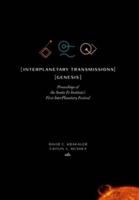Publisher's Synopsis
The relationship between the predicted transition location and the first and second modes of instability in two-dimensional supersonic boundary-layer flow on a flat plate is examined. Linear stability theory and the N-factor criterion are used to predict transition location. The effect of heat transfer is also studied; the results demonstrate that the transition reversal phenomenon can be explained by the opposite effect of cooling on the first and second modes of instability. Compressibility of destabilizing at free-stream Mach numbers of 2 to 3.5. The predicted transition location is due to the oblique first modes of instability, up to free-stream Mach numbers between 6 and 6.5. At higher Mach numbers, the predicted transition location is due to a combination of two-dimensional first and second modes of instability. Masad, Jamal A. Unspecified Center NAS1-19299; RTOP 537-03-23-03...












